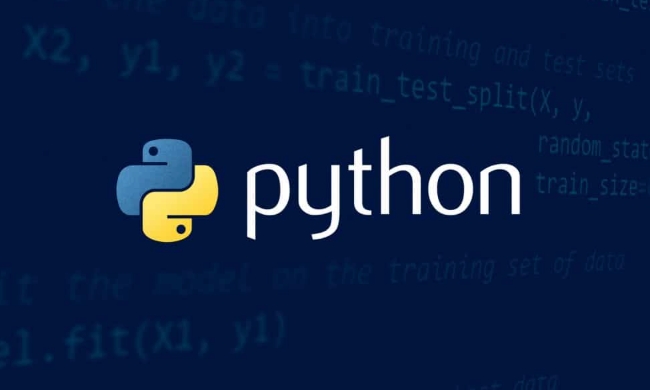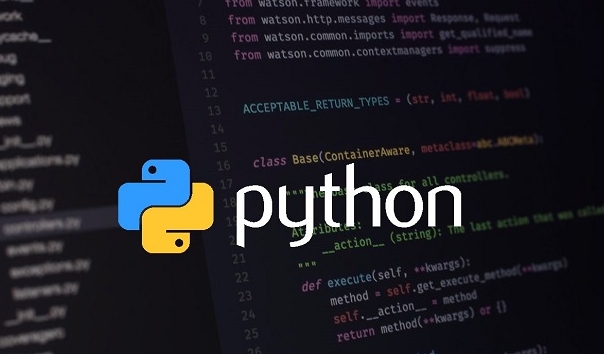 Backend Development
Backend Development
 Python Tutorial
Python Tutorial
 Creating RESTful APIs with Python Flask or Django REST Framework
Creating RESTful APIs with Python Flask or Django REST Framework
Creating RESTful APIs with Python Flask or Django REST Framework
Jul 06, 2025 am 02:39 AMFlask is suitable for small projects or customized needs, while Django REST Framework (DRF) is more suitable for medium and large projects. 1. Flask is a lightweight framework with high freedom. It defines routing and processing request logic through @app.route(), which is suitable for quickly building simple interfaces; 2. DRF is based on Django, providing core functions such as Serializers, Views and Routers, supporting automatic URL management, permission control and paging, improving development efficiency and code structure clarity; 3. Selection basis includes: if the project is low, select Flask, choose DRF, if there is already a Django project or needs long-term maintenance, use Flask for high flexibility requirements, and use DRF to emphasize development efficiency and team collaboration; 4. Beginners recommend learning Flask first to understand the underlying mechanism, and then advanced to use DRF to master advanced functions.

Want to quickly build a RESTful API with Python? Flask and Django REST Framework (DRF) are both good choices, depending on your project needs and your familiarity.

Flask: Lightweight and flexible, suitable for small projects or customized needs
Flask is a micro-framework with a simple core and high degree of freedom. If you don't have many API features, want to control details, or just make a prototype, Flask is a good choice.

Basic steps to create a RESTful API using Flask:
- Install Flask:
pip install flask - Define routes with
@app.route() - Processing logic according to request methods (GET, POST, etc.)
- When returning JSON data,
jsonify()is usually used
For example, write a GET interface to obtain user information:

from flask import Flask, jsonify
app = Flask(__name__)
@app.route('/users/<int:user_id>', methods=['GET'])
def get_user(user_id):
# Suppose the data is fetched from the database here user = {"id": user_id, "name": "Alice"}
return jsonify(user)Flask has the advantage of being quick to get started and has few configurations, but the disadvantages are also obvious: as the number of interfaces increases, the code is prone to become messy and lacks a unified structure.
Django REST Framework: Full-featured, suitable for medium and large projects
If your project is large or has used Django as the backend, DRF is a more suitable choice. It is based on Django, encapsulates many commonly used functions, and has higher development efficiency.
Several core concepts of DRF:
- Serializers : Responsible for data conversion and verification
- Views : Processing requests and returning responses
- Routers : Automatically manage URL configuration
For example, define a user serializer and view:
from rest_framework import serializers, viewssets
from .models import User
class UserSerializer(serializers.ModelSerializer):
class Meta:
model = User
fields = '__all__'
class UserViewSet(viewsets.ModelViewSet):
queryset = User.objects.all()
serializer_class = UserSerializerThen registering the route will complete the construction of the entire CRUD interface. This approach is not only clear in structure, but also comes with functions such as permission control and paging, which is very suitable for team collaboration and long-term maintenance.
How to choose a model? It's enough to look at these aspects
The choice of Flask or DRF mainly depends on the following factors:
- Project complexity : Choose Flask for simple projects, and choose DRF for complex projects
- Is there a Django project already : if so, use DRF directly
- Requirements for flexibility : Highly customized selection of Flask
- Development efficiency requirements : It is recommended to use the ready-made functions provided by DRF to quickly launch.
- Team Experience : If everyone is familiar with Django, it will be easier to use DRF
In addition, if you are just starting to learn, it is recommended to use Flask to figure out how the API works, and then transition to DRF. This not only allows you to understand the underlying mechanisms, but also master the use of advanced tools.
Overall, the Flask is more like a Swiss Army knife, while the DRF is like a complete toolbox. Only by selecting the right tools according to the actual scenario can you complete the task efficiently and safely. Basically that's it.
The above is the detailed content of Creating RESTful APIs with Python Flask or Django REST Framework. For more information, please follow other related articles on the PHP Chinese website!

Hot AI Tools

Undress AI Tool
Undress images for free

Undresser.AI Undress
AI-powered app for creating realistic nude photos

AI Clothes Remover
Online AI tool for removing clothes from photos.

Clothoff.io
AI clothes remover

Video Face Swap
Swap faces in any video effortlessly with our completely free AI face swap tool!

Hot Article

Hot Tools

Notepad++7.3.1
Easy-to-use and free code editor

SublimeText3 Chinese version
Chinese version, very easy to use

Zend Studio 13.0.1
Powerful PHP integrated development environment

Dreamweaver CS6
Visual web development tools

SublimeText3 Mac version
God-level code editing software (SublimeText3)

Hot Topics
 How does Python's unittest or pytest framework facilitate automated testing?
Jun 19, 2025 am 01:10 AM
How does Python's unittest or pytest framework facilitate automated testing?
Jun 19, 2025 am 01:10 AM
Python's unittest and pytest are two widely used testing frameworks that simplify the writing, organizing and running of automated tests. 1. Both support automatic discovery of test cases and provide a clear test structure: unittest defines tests by inheriting the TestCase class and starting with test\_; pytest is more concise, just need a function starting with test\_. 2. They all have built-in assertion support: unittest provides assertEqual, assertTrue and other methods, while pytest uses an enhanced assert statement to automatically display the failure details. 3. All have mechanisms for handling test preparation and cleaning: un
 How can Python be used for data analysis and manipulation with libraries like NumPy and Pandas?
Jun 19, 2025 am 01:04 AM
How can Python be used for data analysis and manipulation with libraries like NumPy and Pandas?
Jun 19, 2025 am 01:04 AM
PythonisidealfordataanalysisduetoNumPyandPandas.1)NumPyexcelsatnumericalcomputationswithfast,multi-dimensionalarraysandvectorizedoperationslikenp.sqrt().2)PandashandlesstructureddatawithSeriesandDataFrames,supportingtaskslikeloading,cleaning,filterin
 What are dynamic programming techniques, and how do I use them in Python?
Jun 20, 2025 am 12:57 AM
What are dynamic programming techniques, and how do I use them in Python?
Jun 20, 2025 am 12:57 AM
Dynamic programming (DP) optimizes the solution process by breaking down complex problems into simpler subproblems and storing their results to avoid repeated calculations. There are two main methods: 1. Top-down (memorization): recursively decompose the problem and use cache to store intermediate results; 2. Bottom-up (table): Iteratively build solutions from the basic situation. Suitable for scenarios where maximum/minimum values, optimal solutions or overlapping subproblems are required, such as Fibonacci sequences, backpacking problems, etc. In Python, it can be implemented through decorators or arrays, and attention should be paid to identifying recursive relationships, defining the benchmark situation, and optimizing the complexity of space.
 How can you implement custom iterators in Python using __iter__ and __next__?
Jun 19, 2025 am 01:12 AM
How can you implement custom iterators in Python using __iter__ and __next__?
Jun 19, 2025 am 01:12 AM
To implement a custom iterator, you need to define the __iter__ and __next__ methods in the class. ① The __iter__ method returns the iterator object itself, usually self, to be compatible with iterative environments such as for loops; ② The __next__ method controls the value of each iteration, returns the next element in the sequence, and when there are no more items, StopIteration exception should be thrown; ③ The status must be tracked correctly and the termination conditions must be set to avoid infinite loops; ④ Complex logic such as file line filtering, and pay attention to resource cleaning and memory management; ⑤ For simple logic, you can consider using the generator function yield instead, but you need to choose a suitable method based on the specific scenario.
 What are the emerging trends or future directions in the Python programming language and its ecosystem?
Jun 19, 2025 am 01:09 AM
What are the emerging trends or future directions in the Python programming language and its ecosystem?
Jun 19, 2025 am 01:09 AM
Future trends in Python include performance optimization, stronger type prompts, the rise of alternative runtimes, and the continued growth of the AI/ML field. First, CPython continues to optimize, improving performance through faster startup time, function call optimization and proposed integer operations; second, type prompts are deeply integrated into languages ??and toolchains to enhance code security and development experience; third, alternative runtimes such as PyScript and Nuitka provide new functions and performance advantages; finally, the fields of AI and data science continue to expand, and emerging libraries promote more efficient development and integration. These trends indicate that Python is constantly adapting to technological changes and maintaining its leading position.
 How do I perform network programming in Python using sockets?
Jun 20, 2025 am 12:56 AM
How do I perform network programming in Python using sockets?
Jun 20, 2025 am 12:56 AM
Python's socket module is the basis of network programming, providing low-level network communication functions, suitable for building client and server applications. To set up a basic TCP server, you need to use socket.socket() to create objects, bind addresses and ports, call .listen() to listen for connections, and accept client connections through .accept(). To build a TCP client, you need to create a socket object and call .connect() to connect to the server, then use .sendall() to send data and .recv() to receive responses. To handle multiple clients, you can use 1. Threads: start a new thread every time you connect; 2. Asynchronous I/O: For example, the asyncio library can achieve non-blocking communication. Things to note
 Polymorphism in python classes
Jul 05, 2025 am 02:58 AM
Polymorphism in python classes
Jul 05, 2025 am 02:58 AM
Polymorphism is a core concept in Python object-oriented programming, referring to "one interface, multiple implementations", allowing for unified processing of different types of objects. 1. Polymorphism is implemented through method rewriting. Subclasses can redefine parent class methods. For example, the spoke() method of Animal class has different implementations in Dog and Cat subclasses. 2. The practical uses of polymorphism include simplifying the code structure and enhancing scalability, such as calling the draw() method uniformly in the graphical drawing program, or handling the common behavior of different characters in game development. 3. Python implementation polymorphism needs to satisfy: the parent class defines a method, and the child class overrides the method, but does not require inheritance of the same parent class. As long as the object implements the same method, this is called the "duck type". 4. Things to note include the maintenance
 How do I slice a list in Python?
Jun 20, 2025 am 12:51 AM
How do I slice a list in Python?
Jun 20, 2025 am 12:51 AM
The core answer to Python list slicing is to master the [start:end:step] syntax and understand its behavior. 1. The basic format of list slicing is list[start:end:step], where start is the starting index (included), end is the end index (not included), and step is the step size; 2. Omit start by default start from 0, omit end by default to the end, omit step by default to 1; 3. Use my_list[:n] to get the first n items, and use my_list[-n:] to get the last n items; 4. Use step to skip elements, such as my_list[::2] to get even digits, and negative step values ??can invert the list; 5. Common misunderstandings include the end index not





